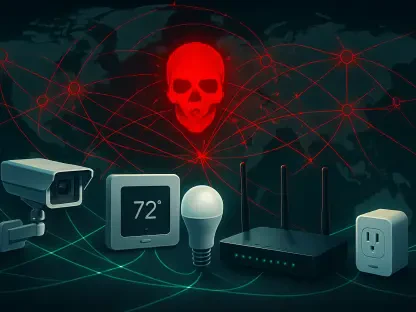The Linux industry stands at a crossroads as it embraces change and innovation while balancing the need to support legacy hardware. This upward trajectory is marked not only by technological advancement but also by strategic decisions that shape the future of computing platforms. With Linux dominating critical areas such as desktop, server, and embedded systems, its evolution continues to engage stakeholders across the globe. Known for seamless adaptability and robust security, Linux attracts prominent players, including Red Hat, Canonical, and SUSE, who influence the direction of open-source development. Within this dynamic landscape, regulatory measures and compliance standards ensure secure practices, adding layers of complexity and opportunity for growth in the realm of Linux systems.
Recent developments have stirred the industry, particularly with the announcement of dropping support for Intel’s 486 and early 586 processors in Linux Kernel 6.15. Technology trends transforming Linux involve enhanced cloud computing capacities, IoT integration, and shifting consumer behaviors. The industry’s trajectory points toward embracing modern architectures that promise speed and efficiency, thanks to emerging technologies like artificial intelligence and machine learning. There is a palpable momentum in the market, presenting opportunities for growth while demanding adaptation from legacy systems. These technological shifts align with Linux’s vision to streamline operations, eliminating cumbersome code that once catered to outdated hardware architectures.
Forecasts indicate a promising future for modernized Linux systems targeting current hardware standards. Market data suggest an uptick in cloud-centric solutions, with performance expectations growing as companies lean into virtualization and containerization. By the cessation of support for older CPUs, Linux positions itself for future hardware compatibility, ensuring optimal performance across newer devices. Growth indicators emphasize this strategic shift as a catalyst for innovation, fostering an environment where Linux systems can harness the power of contemporary computing capabilities.
Navigating challenges related to hardware compatibility remains an ongoing concern for Linux kernel development. Legacy support poses hurdles that demand innovative solutions within the realms of emulation and performance optimization. Removing support for obsolete CPUs stands as a rare but necessary step to streamline the kernel’s functionality, minimizing the burden of maintaining outdated code. Opportunities abound for Linux to explore strategic alliances and technological advancements that overcome compatibility issues. As Linux redefines its trajectory, the focus on technologically advancing architectures solidifies its role as a pioneer in computing efficiency.
Within the regulatory landscape, adherence to security standards and compliance protocols plays a crucial role in kernel support decisions. As laws and standards evolve, Linux seeks strategies that meet fresh security exigencies, ensuring alignment with practices that guarantee reliability and user safety. Regulatory frameworks impact industry dynamics, compelling Linux systems to enact measures ensuring readiness for transitioning market demands. Identifying resolutions that harmonize compliance and progression poses a unique opportunity for Linux developers to curate kernels that embrace emerging needs while fostering secure computing environments.
Looking ahead, Linux kernel development reflects a trend toward integrating new technologies and emphasizing streamlined architectures. Innovation appears poised to drive Linux’s evolution, interlocking product development with current economic shifts. The global tech agenda adds complexity, influencing kernel shifts toward efficiency and adaptability. Investigating opportunities rooted in innovation, Linux now focuses on harnessing potential disruptors like quantum computing and next-gen networking that may redefine kernel landscapes. Ensuring Linux remains at the forefront of modern computing practices entails strategic alignment with emerging tech advancements and economic conditions.
Having assessed recent developments, the end of support for older CPUs in Linux kernel 6.15 paves the path for future growth aligned with modern computing needs. By prioritizing advancements in hardware compatibility, the Linux community can prepare for infrastructural evolutions and technological innovations that promise enriched capabilities. This vital transition opens avenues for growth, setting the stage for future investments targeting systems that thrive amidst evolving hardware standards. Linux, in adapting to this shift, promises to enhance stakeholders’ focus on maintaining contemporary relevance while fostering a sustainable landscape for computing excellence.









